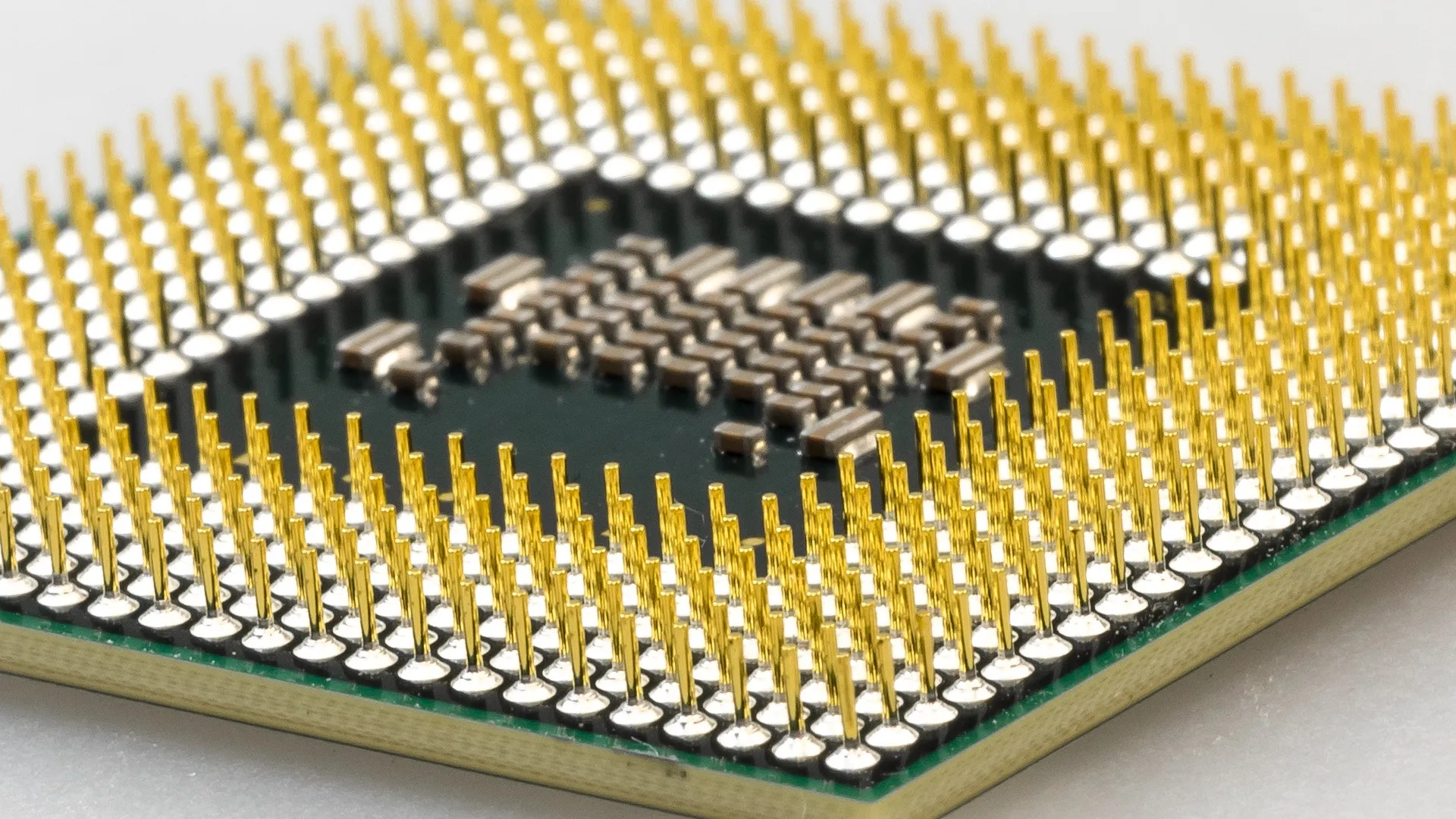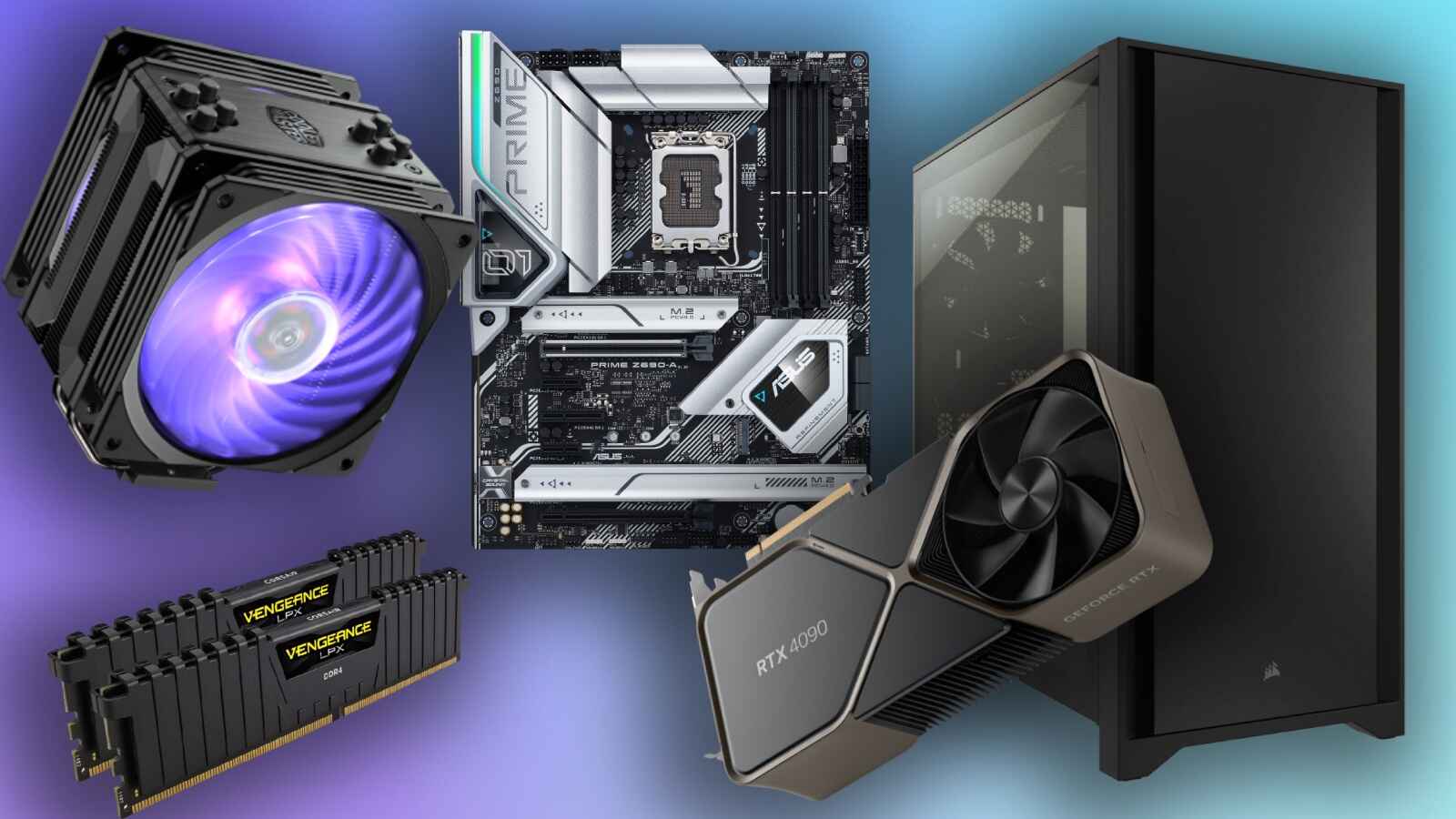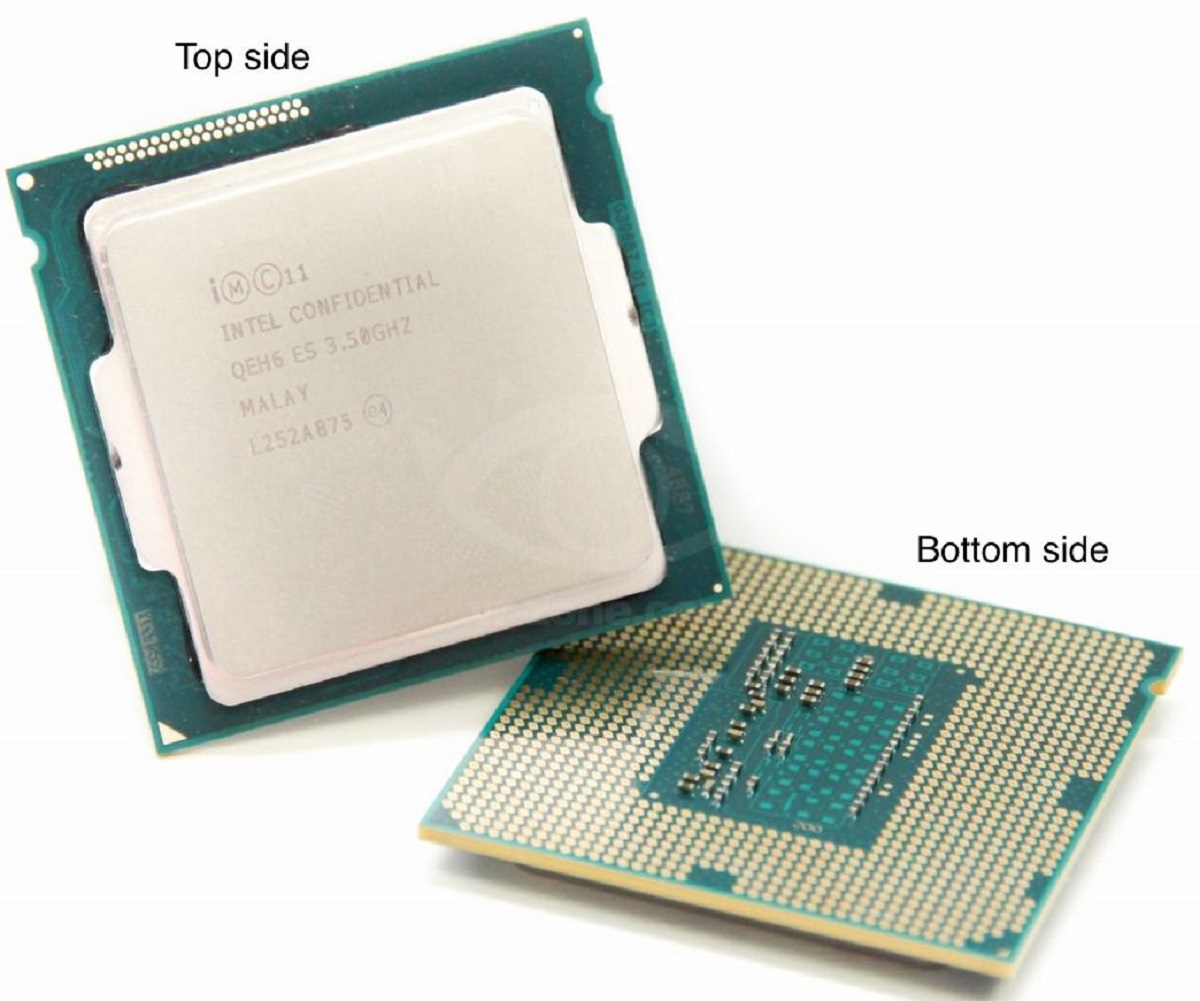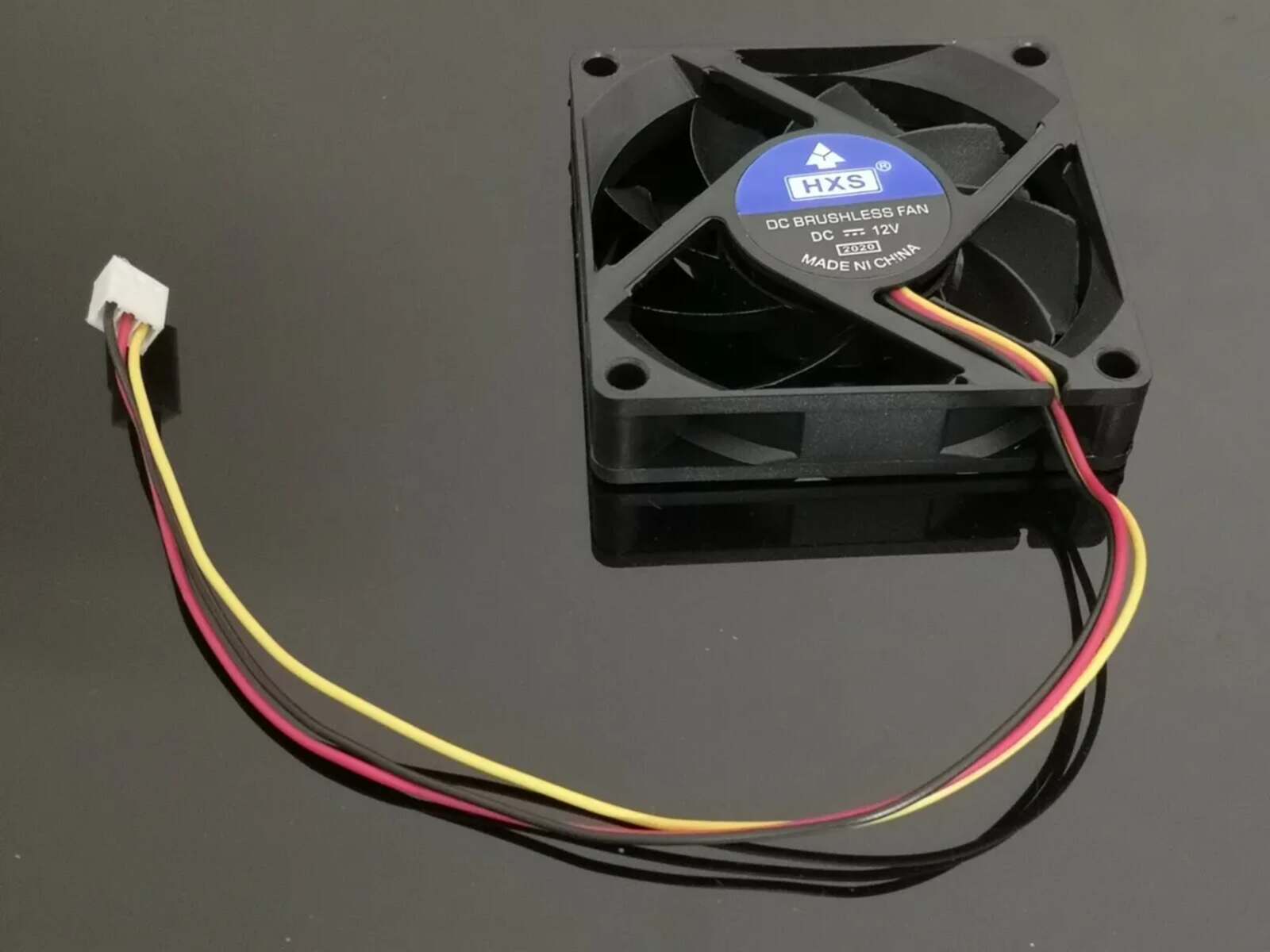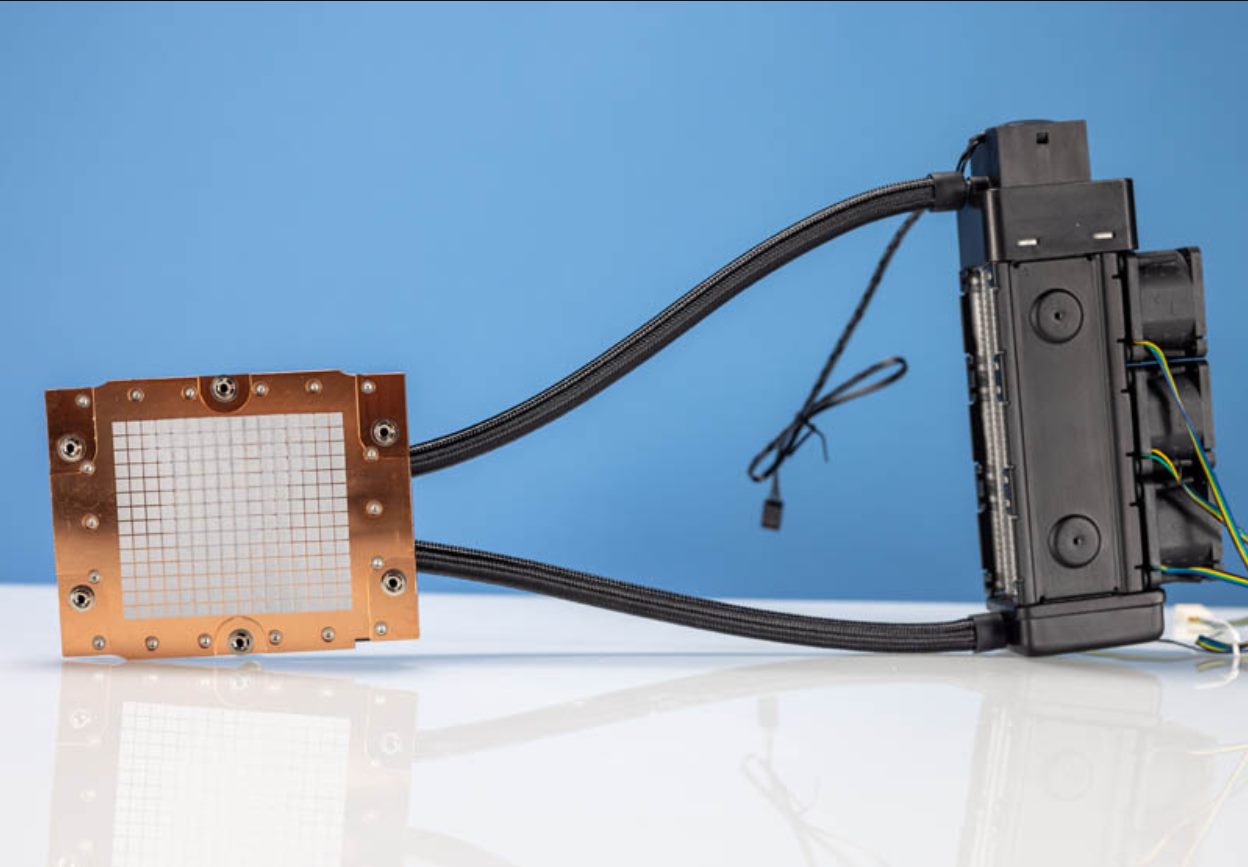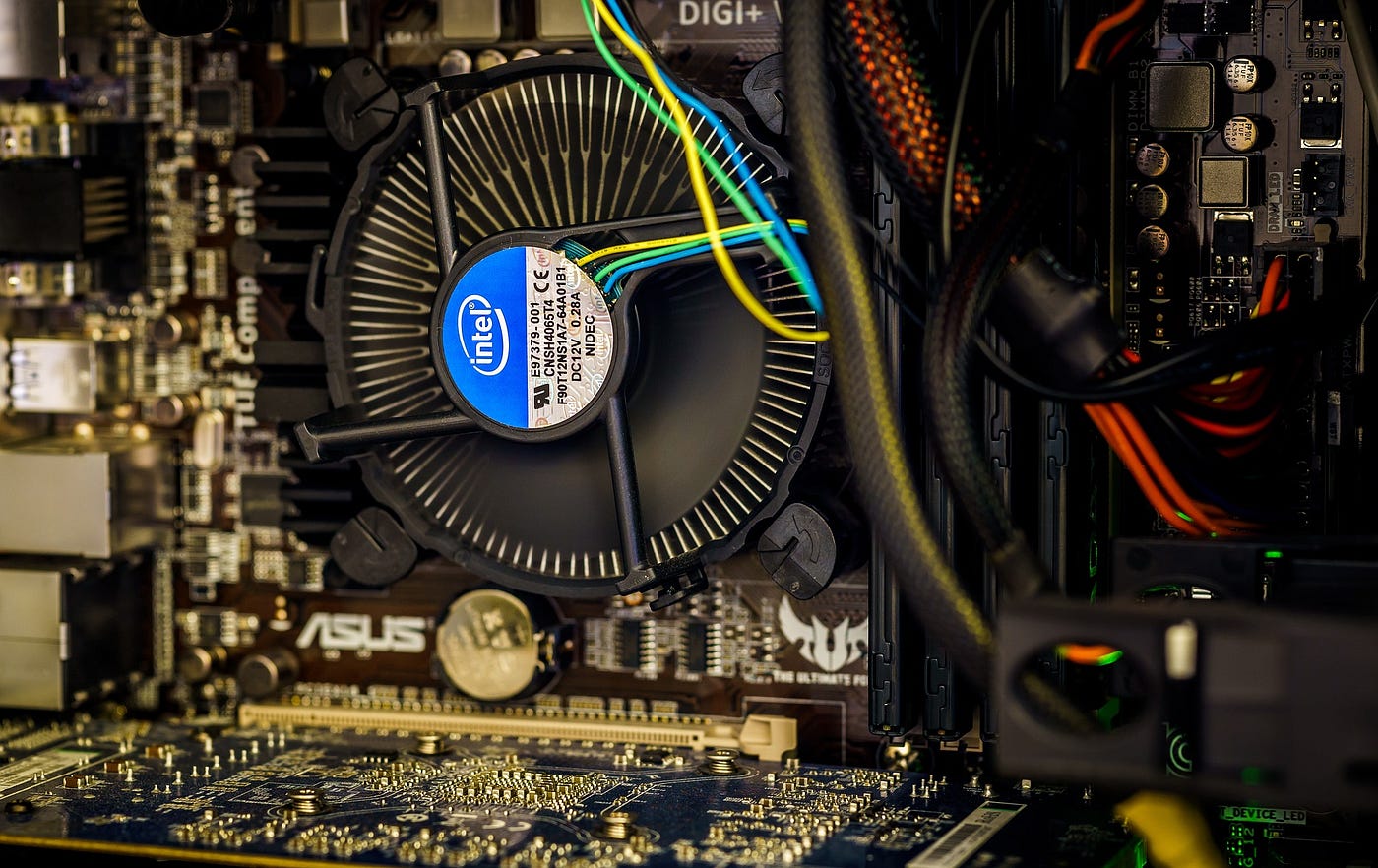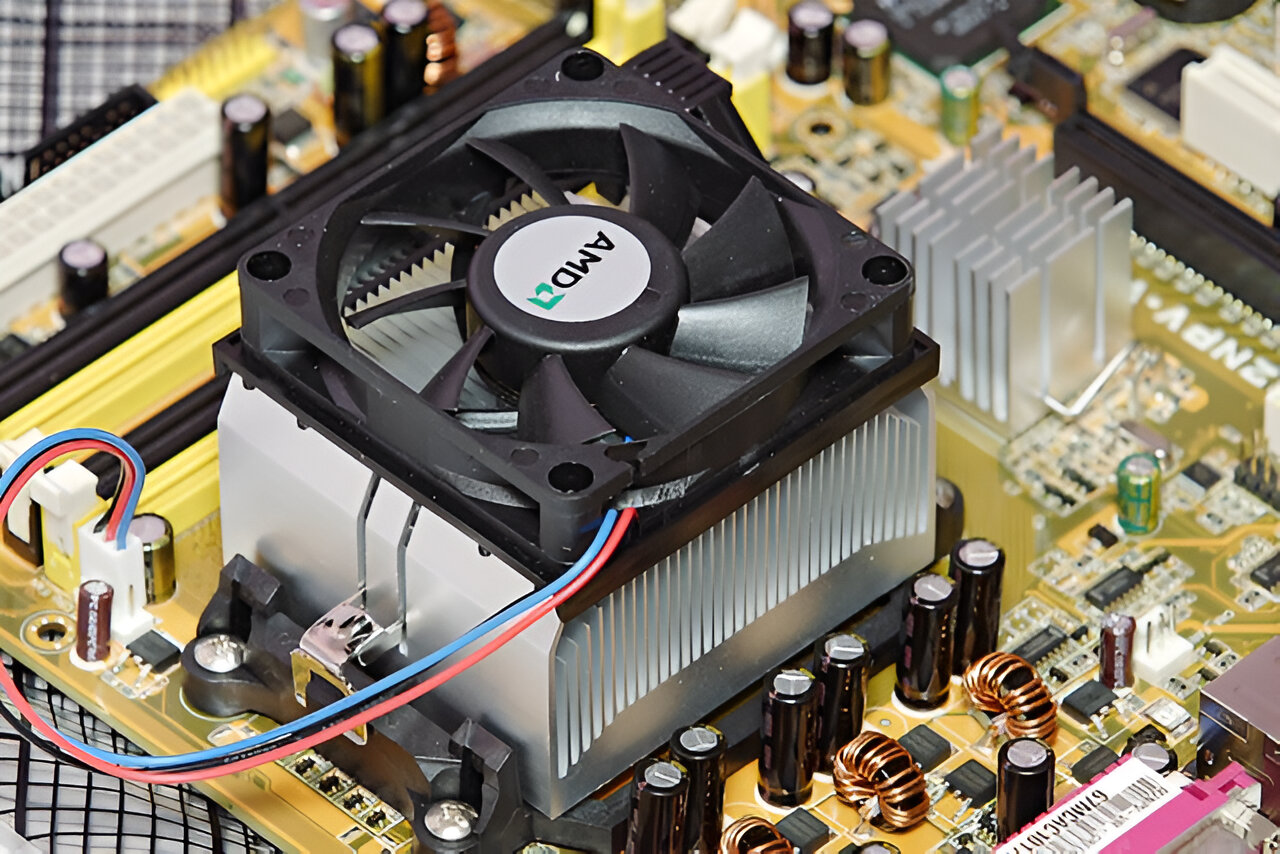Introduction
The central processing unit (CPU) is often referred to as the “brain” of a computer. It is responsible for performing calculations, executing instructions, and managing the overall operations of a computer system. One of the essential components of a CPU is its pins, which play a crucial role in connecting it to other parts of the computer.
CPU pins are small, metallic connectors that extend from the underside of the processor. These pins serve as the interface between the CPU and the motherboard, allowing for the transfer of electrical signals and data between the two. The pins are carefully arranged in a specific pattern, known as the CPU socket, which ensures proper alignment and connection.
Understanding the significance of CPU pins is essential, as they have a direct impact on a computer’s performance, compatibility, and upgradeability. The number of pins on a CPU varies depending on the specific processor model, socket type, and technological advancements. In this article, we will explore the world of CPU pins, delve into reasons for their existence, and examine the factors that determine the number of pins on a CPU.
Furthermore, we will discuss the different types of CPU sockets commonly found in the market and how the pin count affects performance and compatibility. Lastly, we will touch upon recent developments in CPU pin technology and their implications for future computing equipment.
What are CPU pins?
CPU pins are small, thin, and metallic connectors that protrude from the underside of a central processing unit (CPU). They serve as the primary means of communication and electrical connection between the CPU and the motherboard, allowing data and signals to flow between the two components.
These pins are strategically arranged in a specific pattern known as the CPU socket, which is located on the motherboard. The socket ensures that the pins are aligned correctly, providing a secure and reliable connection between the CPU and the motherboard.
The number of pins on a CPU can vary greatly depending on the specific model and socket type. Older CPUs typically have fewer pins compared to their newer counterparts. For example, early Intel CPUs, such as the Pentium 4, had fewer than 500 pins. However, with advancements in technology and the increasing complexity of processors, modern CPUs can have hundreds or even thousands of pins.
The pins themselves are extremely small and delicate, requiring careful handling during installation or removal of the CPU. Any damage to the pins can result in a malfunctioning or inoperable CPU, rendering the computer useless.
It’s important to note that not all CPUs have visible pins. Some processors, like the Intel Core i series, utilize a pinless design called Land Grid Array (LGA). With LGA, the pins are located on the socket instead of the CPU, providing a more efficient and reliable connection. In this configuration, the CPU features small, flat contacts that align with the pins on the socket, ensuring a secure electrical connection.
In summary, CPU pins are crucial components that allow for the proper functioning of a processor. They serve as the interface between the CPU and the motherboard, providing electrical connections for data transfer and communication. The number and configuration of these pins vary depending on the CPU model and socket type, and they require careful handling to prevent damage during installation or removal.
Why do CPUs have pins?
CPU pins play a vital role in the functionality and performance of a computer. They serve several important purposes, which is why CPUs are equipped with pins.
First and foremost, CPU pins facilitate the electrical connection between the processor and the motherboard. The pins allow for the transfer of data, power, and control signals, ensuring seamless communication between the CPU and other components of the computer system. Without these pins, the CPU would not be able to function and interact with the rest of the hardware.
Moreover, the pins serve as the physical interface that aligns and secures the CPU onto the motherboard. They provide a secure connection that prevents the CPU from becoming loose or dislodged during usage, which could result in poor performance or system instability. The alignment of the pins with the CPU socket is crucial because it ensures that all the electrical connections are correctly established.
The presence of pins also allows for easy removal and replacement of the CPU. If a CPU needs to be upgraded or replaced due to performance or compatibility issues, the pins enable users to simply remove the old CPU and install a new one without requiring any complex procedures. This convenience ensures that CPUs can be easily upgraded or replaced, extending the lifespan and adaptability of a computer system.
Another important reason why CPUs have pins is to enable thermal management. The pins provide an interface for attaching the CPU cooler, which helps dissipate the heat generated by the processor. Efficient cooling is crucial for maintaining optimal CPU performance and preventing overheating, which can lead to system instability and damage.
Lastly, the number and arrangement of CPU pins are closely tied to the overall design and architecture of the processor. The pins accommodate the necessary connections and pathways required for the CPU to execute instructions, perform calculations, and carry out other complex tasks. The number of pins can vary depending on factors such as the processor’s complexity, capabilities, and manufacturing process.
In summary, CPU pins serve multiple essential functions. They establish the electrical connection between the CPU and the motherboard, facilitate secure and stable alignment, allow for easy replacement or upgrade, aid in thermal management, and support the overall design and functionality of the processor. Collectively, these reasons highlight the importance of CPUs having pins to ensure the smooth operation and performance of computer systems.
How many pins are on a CPU?
The number of pins on a CPU can vary depending on various factors, including the processor model, socket type, and technological advancements. Over the years, CPUs have undergone significant changes, resulting in different pin configurations.
In the past, CPUs had relatively fewer pins compared to modern processors. Early CPUs, such as the Intel Pentium 4, had around 423 pins, while AMD Athlon processors featured around 462 pins. These older CPUs had fewer pins because they had simpler architectures and fewer integrated components.
With the advancement of technology and the increasing complexity of processors, the number of pins on CPUs has significantly increased. Today, CPUs can have hundreds or even thousands of pins. For example, modern Intel Core i7 processors have around 1,206 pins, while AMD Ryzen processors can have anywhere from 1,331 to 2,024 pins, depending on the specific model.
The number of pins on a CPU is closely related to its socket type. The socket is the physical interface on the motherboard that the CPU fits into. Different processor families and manufacturers utilize distinct socket designs that consist of a specific pin arrangement. The socket and CPU must be compatible in terms of pin count, alignment, and electrical requirements.
There are various CPU socket types in use today, with different pin counts. For example, the Intel LGA 1151 socket, commonly found in mainstream desktop CPUs, typically has 1,151 pins. In contrast, the LGA 2066 socket, used in high-end desktop processors, boasts 2,066 pins. On the AMD side, the AM4 socket, which supports mainstream desktop Ryzen processors, typically has 1,331 pins, while the TR4 socket for Threadripper CPUs features a massive 4,094 pins.
In summary, the number of pins on a CPU can vary depending on the specific processor model and socket type. As technology advances and processors become more complex, the number of pins has increased to accommodate the growing demands of performance, connectivity, and integration. Understanding the pin count is crucial for selecting compatible CPUs, motherboards, and ensuring a smooth and efficient computer system.
Factors influencing the number of CPU pins
The number of pins on a CPU is determined by several factors, including the processor’s architecture, complexity, integrated components, and technological advancements. Let’s explore the key factors that influence the number of CPU pins.
1. Processor Architecture: Different CPU architectures have varying requirements for pin count. Processors with more complex architectures often require more pins to accommodate the additional features, cache, and cores. Advanced architectures, such as Intel’s Core i7 and AMD’s Ryzen series, typically have a higher number of pins compared to entry-level CPUs.
2. Integrated Components: Modern CPUs integrate various components, such as graphics processing units (GPUs), memory controllers, and system interfaces, onto a single chip. These integrated components contribute to the overall functionality and performance of the processor. The inclusion of these components often results in an increased pin count to support the necessary connections and data transfer between the CPU and integrated components.
3. Manufacturing Process: Advancements in semiconductor manufacturing processes enable manufacturers to increase chip density and reduce the overall footprint of the CPU. This miniaturization allows for more transistors and components to be integrated onto the same-sized chip, which often requires a higher pin count to maintain connectivity and functionality.
4. Signal Integrity and Speed: Higher pin counts can enhance signal integrity and speed by allowing for more dedicated pins for power, ground, and specific signal lines. This improved signal integrity is crucial for maintaining stable and reliable communication between the CPU and other system components, resulting in better performance and reduced electromagnetic interference.
5. Compatibility and Upgradeability: The number of pins on a CPU is also influenced by compatibility and upgradeability considerations. Manufacturers often define specific socket types that support a certain number of pins. This ensures compatibility between CPUs and motherboards. As technology evolves, new socket designs with different pin counts are introduced to facilitate faster and more capable CPUs.
6. Power Delivery and Thermal Management: CPUs require a steady supply of power and efficient thermal management to maintain optimal performance. The number of pins on a CPU can be influenced by the need for dedicated power and ground pins, as well as pins dedicated to thermal monitoring and cooling solutions.
It’s essential to consider these factors when selecting a CPU for a computer system. Understanding the pin count and its underlying factors helps ensure compatibility, upgradeability, and optimal performance. Manufacturers carefully balance these factors to provide CPUs that meet the demands of different applications and computing requirements.
Common types of CPU sockets and their pin counts
CPU sockets are physical interfaces on motherboards that allow for the installation of compatible CPUs. Each CPU socket has a specific pin arrangement that corresponds to a particular processor family and model. Let’s explore some common types of CPU sockets and their associated pin counts.
1. Intel LGA (Land Grid Array) Sockets: Intel utilizes LGA sockets for its CPUs. These sockets feature an array of pins on the motherboard, while the CPU itself has flat contacts instead of pins. The pin count varies depending on the socket version. For instance, the mainstream LGA 1151 socket typically has 1,151 pins, while the high-end LGA 2066 socket boasts 2,066 pins. Intel’s server-grade CPUs use sockets such as LGA 3647, which can have up to 3,647 pins.
2. AMD PGA (Pin Grid Array) Sockets: AMD employs PGA sockets for its CPUs, where the CPU features numerous pins that fit into corresponding holes in the socket. The pin count varies across different socket types. The popular AM4 socket, used for mainstream AMD Ryzen processors, typically has 1,331 pins. Meanwhile, the TR4 socket, designed for AMD Threadripper CPUs, is known for its massive 4,094-pin count. AMD’s server-grade sockets, such as SP3 and TRX40, have even higher pin counts to accommodate their respective processors.
3. Intel BGA (Ball Grid Array) Sockets: In some cases, Intel uses BGA sockets, where the CPU is directly soldered onto the motherboard, and there are no visible pins. These sockets are typically found in low-power, embedded, and mobile devices. BGA sockets offer advantages like reduced cost, simplified installation, and improved thermal performance. However, their non-upgradeable nature limits their use in consumer desktop systems.
4. Other Socket Types: Apart from LGA and PGA sockets, there are also other socket types used for specific CPUs and applications. For example, the SP3 socket is utilized for AMD EPYC server-grade processors and can have either 4,094 or 7,364 pins, depending on the specific model. Additionally, there are sockets designed for niche processors like Intel Xeon phi and specialized platforms like the Intel Atom C2000 series.
It’s important to note that CPUs and motherboards must use compatible socket types to ensure proper installation and functionality. Attempting to fit a CPU into an incompatible socket can result in physical and electrical damage. When selecting a CPU, it is crucial to verify its compatibility with the specific socket type of the motherboard.
In summary, CPU sockets can vary in terms of their pin count and design. Intel LGA sockets feature pins on the motherboard, while AMD PGA sockets have pins on the CPU. The pin count varies based on the socket type and is determined by factors such as the architecture, complexity, and integration of the processors. Understanding the different socket types and their associated pin counts is essential for selecting the appropriate CPU and motherboard combination.
How the number of pins affects performance and compatibility
The number of pins on a CPU has a direct impact on both performance and compatibility when it comes to building a computer system. Let’s explore how the pin count affects these crucial aspects.
Performance: The number of pins on a CPU can influence its performance in several ways. Firstly, a higher pin count allows for increased connectivity, enabling the CPU to efficiently communicate with other components. More pins provide dedicated pathways for data transfer, power delivery, and control signals, resulting in improved performance and responsiveness. Moreover, a higher pin count often indicates a more advanced and capable processor, with additional features, cache, and cores, leading to enhanced computational power and multitasking capabilities.
Additionally, a higher pin count can support faster and more robust data transmission. It allows for a greater number of high-speed signal lines, enabling quicker and more efficient communication between the CPU and other system components. This can result in reduced latency, faster data access, and overall improved system performance.
Compatibility: The pin count of a CPU is crucial when it comes to compatibility with the motherboard and other system components. CPUs and motherboards must have matching socket types and pin configurations to ensure proper installation and functionality. Using a CPU with a different pin count or incompatible socket type will prevent the CPU from being properly seated or connected, rendering it unusable.
Furthermore, the pin count also correlates with the power requirements of the CPU. CPUs with higher pin counts often require more power for their operation, and therefore, it is essential to ensure that the motherboard and power supply unit are capable of providing the necessary power. Incompatible power delivery can lead to instability, reduced performance, or potential damage to the CPU or other components.
It is crucial to research and understand the compatibility requirements of the CPU and motherboard before purchasing or building a computer system. Motherboard manufacturers typically provide detailed information about the socket type and supported CPU models, including the pin count. This knowledge allows users to select a compatible CPU that will fit into the motherboard’s socket, ensuring proper installation and optimal performance.
In summary, the number of pins on a CPU directly affects its performance and compatibility with the motherboard. Higher pin counts generally correlate with improved performance, thanks to increased connectivity and support for advanced features. On the other hand, compatibility hinges on the matching socket type and pin configuration between the CPU and motherboard. Understanding these factors is crucial for building a compatible and high-performing computer system.
Recent developments in CPU pin technology
CPU pin technology has undergone significant advancements in recent years, driven by the need for improved performance, increased power efficiency, and enhanced connectivity. Let’s explore some of the notable developments in CPU pin technology.
1. Pinless Designs: One notable development in CPU pin technology is the emergence of pinless designs. Intel introduced Land Grid Array (LGA) sockets, where the CPU itself features flat contacts, while the socket contains an array of pins. This design offers several advantages, including easier installation, improved electrical connectivity, and reduced risk of pin damage. Pinless designs simplify CPU installation and removal, making it more convenient for users.
2. Increased Pin Density: The miniaturization of transistors and advancements in manufacturing processes have allowed for higher pin densities on CPUs. Manufacturers have been able to fit more pins into smaller areas, enabling greater connectivity and supporting additional features and functionalities. This increase in pin density has facilitated higher data transfer speeds, improved power delivery, and enhanced overall performance.
3. Enhanced Signal Integrity: With the increased complexity and higher frequencies of modern CPUs, maintaining signal integrity has become crucial. To address this, manufacturers have implemented advanced pin designs, such as shielded pins and differential signaling techniques. These advancements help minimize noise and interference, resulting in improved signal quality and more reliable communication between the CPU and other components.
4. Power Delivery Optimization: Effective power delivery is critical for the optimal performance of CPUs. Recent developments in CPU pin technology have focused on improving power delivery efficiency and stability. This includes the implementation of dedicated power and ground pins, as well as advancements in power management circuitry. These improvements help deliver consistent and reliable power to the CPU, ensuring stable operation under varying workloads.
5. High-Speed Data Interfaces: The rising demand for faster and more efficient data transfer has driven advancements in high-speed data interfaces. CPU pin technology has evolved to support interfaces such as PCIe (Peripheral Component Interconnect Express) and DDR (Double Data Rate) memory. These interfaces provide faster data transfer rates, leading to improved system performance and responsiveness.
6. Mobile and Low-Power Innovation: CPU pin technology has also witnessed advancements in the mobile and low-power computing space. Manufacturers strive to develop energy-efficient CPUs for mobile devices, laptops, and other battery-powered systems. These CPUs often feature specialized pin configurations designed to minimize power consumption while maintaining acceptable performance levels.
Overall, recent developments in CPU pin technology have focused on improving installation convenience, increasing pin density, enhancing signal integrity, optimizing power delivery, enabling high-speed data interfaces, and catering to the needs of mobile and low-power computing. These advancements ultimately contribute to improved CPU performance, power efficiency, and overall system reliability.
Considering the importance of CPU pins
CPU pins play a critical role in connecting processors to motherboards and facilitating the transfer of data and signals. The number of pins on a CPU is determined by factors such as the processor’s architecture, complexity, integrated components, and technological advancements. Modern CPUs can have hundreds or even thousands of pins, providing enhanced performance, better connectivity, and improved compatibility.
Understanding CPU pins is crucial when selecting a CPU and motherboard combination, as they must be compatible in terms of socket type and pin count. The pin count affects performance by enabling efficient communication, supporting faster data transmission, and enhancing power delivery and thermal management. The compatibility of the CPU and motherboard depends on matching socket types and pin configurations. It is essential to verify compatibility to prevent damage to components and ensure proper functionality.
Recent developments in CPU pin technology have brought forth innovations such as pinless designs, increased pin densities, enhanced signal integrity, optimized power delivery, high-speed data interfaces, and advancements in mobile and low-power computing. These developments contribute to improved installation convenience, performance, power efficiency, and reliability.
As technology continues to evolve, CPU pin technology is likely to witness further advancements. These advancements will enable even higher pin densities, improved power delivery, enhanced signal integrity, and compatibility advancements to support emerging technologies and computing demands.
In conclusion, CPU pins are integral components that facilitate the connection between CPUs and motherboards, enabling efficient communication and data transfer. The number of pins on a CPU impacts its performance and compatibility. As technology advances, CPU pin technology continues to evolve, introducing innovations that improve installation convenience, performance, power efficiency, and compatibility. Understanding CPU pins and staying informed about recent developments in pin technology are essential for building high-performing, reliable, and future-proof computer systems.







